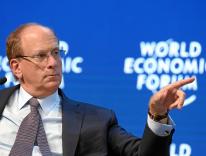Tomorrow Pope Benedict meets with artists in the Sistine Chapel and will address them. In last Wednesday's Audience the Pope spoke about the beauty and spiritual inspiration of Europe's cathedrals. He said:
the power of the Romanesque style and the splendor of the Gothic cathedrals remind us that the "via pulchritudinis," the way of beauty, is a privileged and fascinating route for approaching the Mystery of God. What is the beauty that writers, poets, musicians, artists contemplate and translate in their language, if not the reflection of the splendor of the eternal Word made flesh? St. Augustine affirms: "Question the beauty of the earth, question the beauty of the sea, question the beauty of the air, amply spread around everywhere, question the beauty of the sky, question the serried ranks of the stars, question the sun making the day glorious with its bright beams, question the moon tempering the darkness of the following night with its shining rays, question the animals that move in the waters, that amble about on dry land, that fly in the air; their souls hidden, their bodies evident; the visible bodies needing to be controlled, the invisible souls controlling them; question all these things. They all answer you, 'Here we are, look ; we're beautiful.' Their beauty is their confession. Who made these beautiful changeable things, if not one who is beautiful and unchangeable?" (Sermo CCXLI, 2: PL 38, 1134).Dear brothers and sisters, may the Lord help us to rediscover the way of beauty as one of the ways, perhaps the most attractive and fascinating, to come to encounter and love God.
Sandro Magister provides further background and the full text of the Pope's Audience Address here.Update:The Pope met with some two hundred fifty artists in the Sistine Chapel this morning. With the great frescoes of Michelangelo as incomparable setting, Pope Benedict said:
Dear friends, let us allow these frescoes to speak to us today, drawing us towards the ultimate goal of human history. The Last Judgement, which you see behind me, reminds us that human history is movement and ascent, a continuing tension towards fullness, towards human happiness, towards a horizon that always transcends the present moment even as the two coincide. Yet the dramatic scene portrayed in this fresco also places before our eyes the risk of mans definitive fall, a risk that threatens to engulf him whenever he allows himself to be led astray by the forces of evil. So the fresco issues a strong prophetic cry against evil, against every form of injustice. For believers, though, the Risen Christ is the Way, the Truth and the Life. For his faithful followers, he is the Door through which we are brought to that "face-to-face" vision of God from which limitless, full and definitive happiness flows. Thus Michelangelo presents to our gaze the Alpha and the Omega, the Beginning and the End of history, and he invites us to walk the path of life with joy, courage and hope. The dramatic beauty of Michelangelos painting, its colours and forms, becomes a proclamation of hope, an invitation to raise our gaze to the ultimate horizon.
And the Pope concludes:
Dear artists, as I draw to a conclusion, I too would like to make a cordial, friendly and impassioned appeal to you, as did my Predecessor. You are the custodians of beauty: thanks to your talent, you have the opportunity to speak to the heart of humanity, to touch individual and collective sensibilities, to call forth dreams and hopes, to broaden the horizons of knowledge and of human engagement. Be grateful, then, for the gifts you have received and be fully conscious of your great responsibility to communicate beauty, to communicate in and through beauty! Through your art, you yourselves are to be heralds and witnesses of hope for humanity! And do not be afraid to approach the first and last source of beauty, to enter into dialogue with believers, with those who, like yourselves, consider that they are pilgrims in this world and in history towards infinite Beauty! Faith takes nothing away from your genius or your art: on the contrary, it exalts them and nourishes them, it encourages them to cross the threshold and to contemplate with fascination and emotion the ultimate and definitive goal, the sun that does not set, the sun that illumines this present moment and makes it beautiful.
Sandro Magister has already posted the full text here.
Please email comments to [email protected] and join the conversation on our Facebook page.
Previous Story
What? Me Pray?
Next Story
Rowan Williams in Rome


